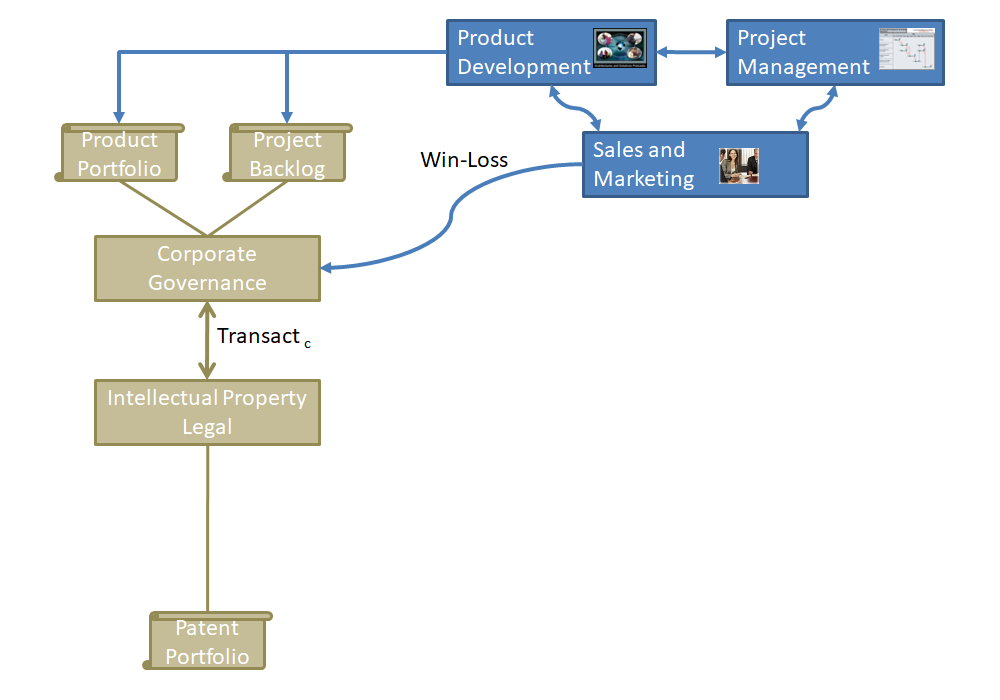ADDRESSING CONFUSION
Unfortunately, general confusion about IP on the “line” is still prevalent. Too few training programs are available to put departmental programs in place to address this issue.
Then where is the best place to make changes and start an effective IP program? In just about every case, it’s at the top.
When a company needs IP legal action, the company faces a choice between an external or internal service. If the answer is internal, and the company already has an IP Group, then fine.
However, if IP is not yet an integral part of the company’s Corporate Governance, the company will need to make changes. These changes can be significant.
Most companies organize an executive management structure around the functions of sales, marketing, administrative, development, and a short list of industry-specific areas. Integrating an IP Group into this structure makes sense.
As a result, companies who employ the above management structure prefer to make their IP Group functionally reportable to their C-Suite team. There are good reasons for this, the most important of which is to focus IP investments on projects that maximize ROI.
When IP goals are set, they generally appear as a goal in a business plan and arbitrarily assigned to one of the above functional groups to create/manage.
Because smaller companies generally do not have any of the above internal capabilities, this situation forces management to make IP decisions without much guidance. To resolve this issue internally, the company will find the process of setting up an IP Group a major obstacle.




